| Name and Description | N = 1 | N = 2 | N = 3 | N = 4 | N = 5 |
|---|---|---|---|---|---|
| Anthony Soroka The actually intricate design is created off a flower shaped object modelded by parametric equations, found in the book Thomas' Calculus: r = A cos(2theta) x = r cos(theta) y = r sin(theta) |
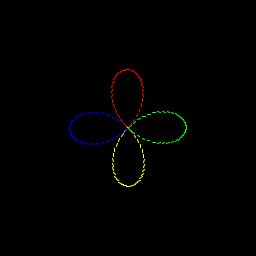 |
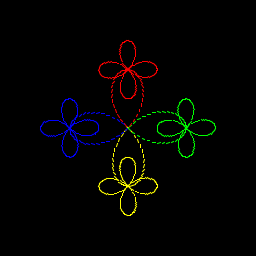 |
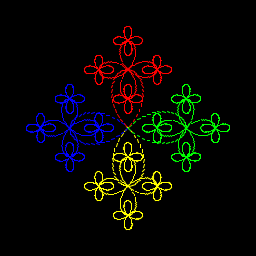 |
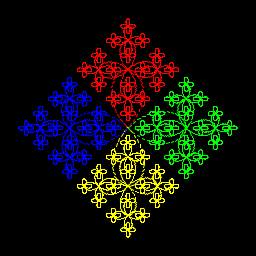 |
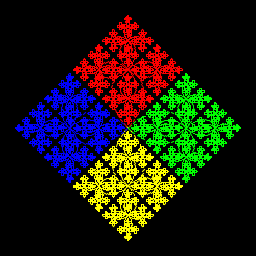 |
| Christina Ilvento The initial design was created by drawing lines between most points of an equilateral octagon. The pen color was yellow when N == 1, and otherwise random between three colors. |
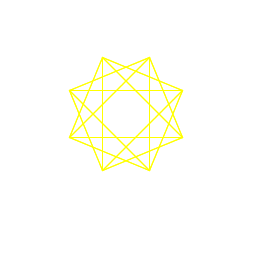 |
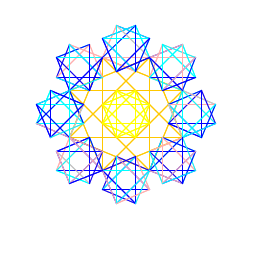 |
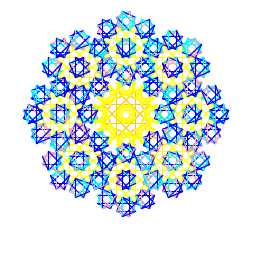 |
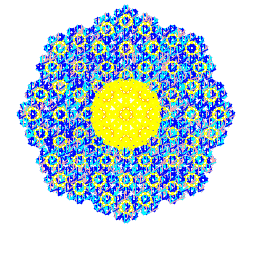 |
 |
| Michael Mashiba Based on a design in the book The Fractal Geometry of Nature. For each greater level, another branch is added to each existing branch 1/4 way from the lowest branch (or the stump, if first). The sides are inverted, so the largest branch is drawn at the top on the right, and on the bottom on the left. Notice that at each level, the resulting branches have 1 fewer branch. |
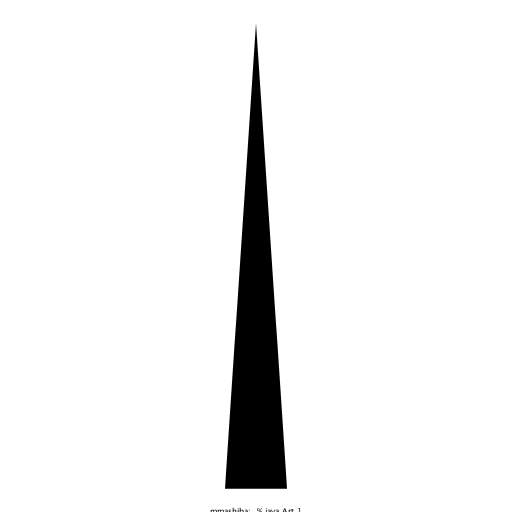 |
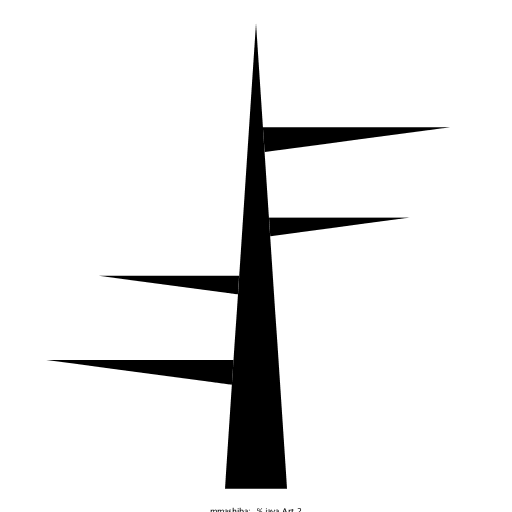 |
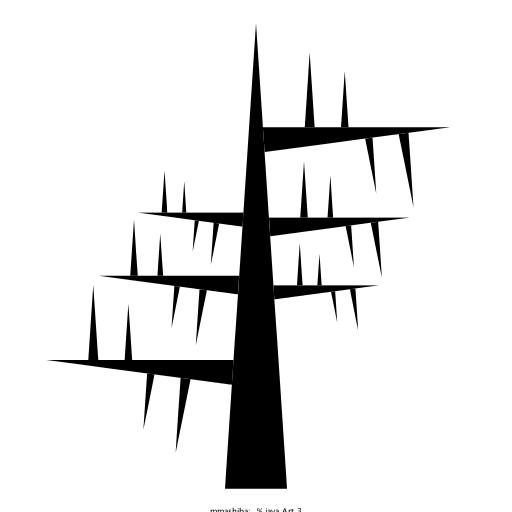 |
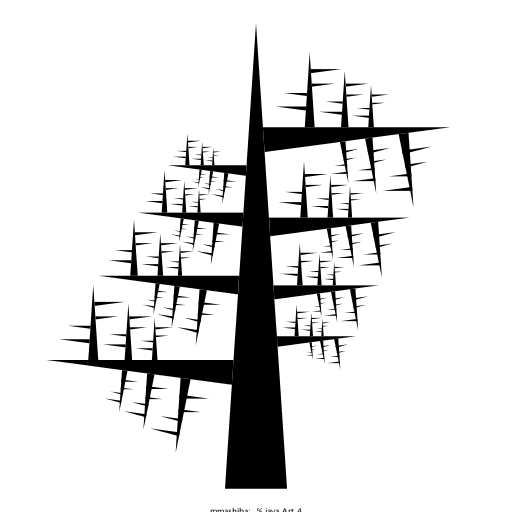 |
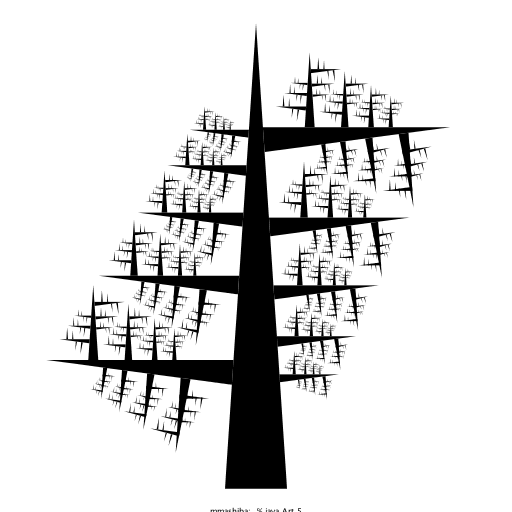 |
| Jonathan Kent 9 circles generated in a "parent" circle. The color of the circles is determined by the iteration number, and none the same color as the parent circle. This fractal attempts to capture the look of famous fractal stuctures such as "Indras pearls". |
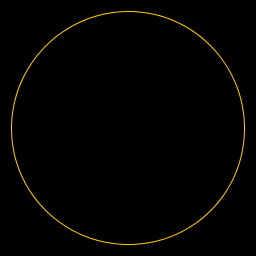 |
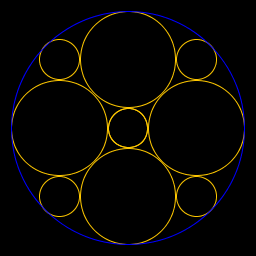 |
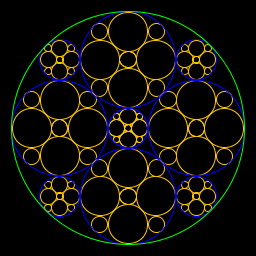 |
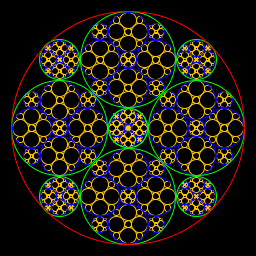 |
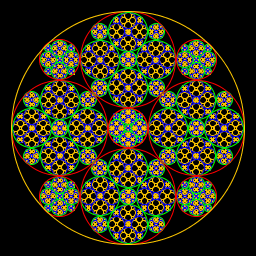 |
| Miles Miller This is a stochastic model of branching. Color and branching patterns change in a probabalistic manner with each recursion. Three initial branches radiate from the center, each of which have three branches extending from their ends and one which extends from somewhere in the middle. The angles at which they extend are determined stochastically. |
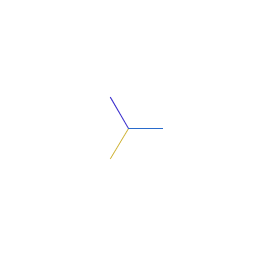 |
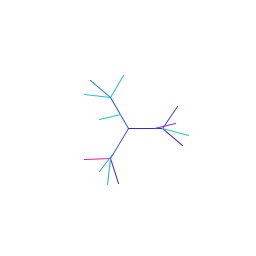 |
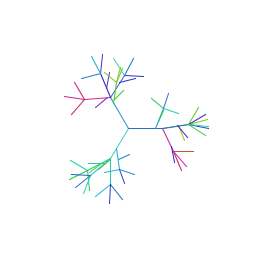 |
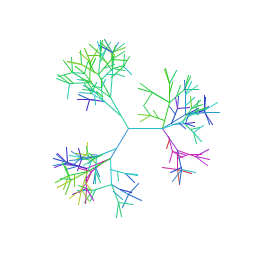 |
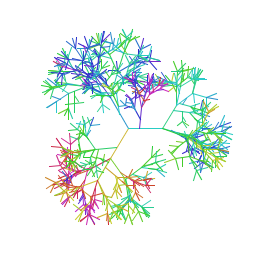 |
| Lia Yu A deer with antlers that kept growing sort of like a tree. The antlers are calculated with size and angle, each pair of antlers are right angles apart from each other. |
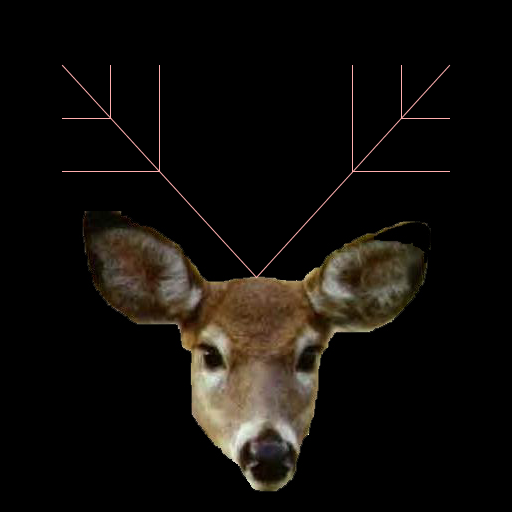 |
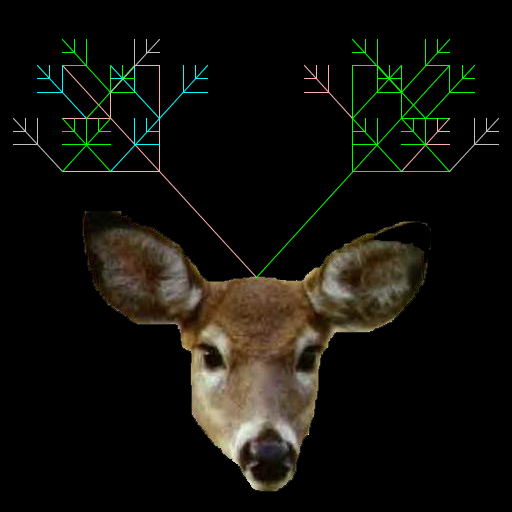 |
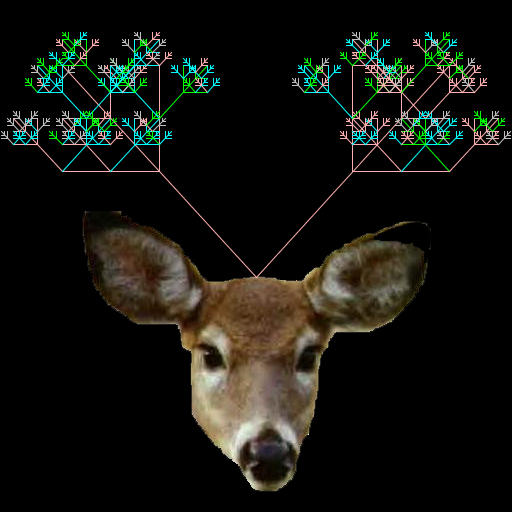 |
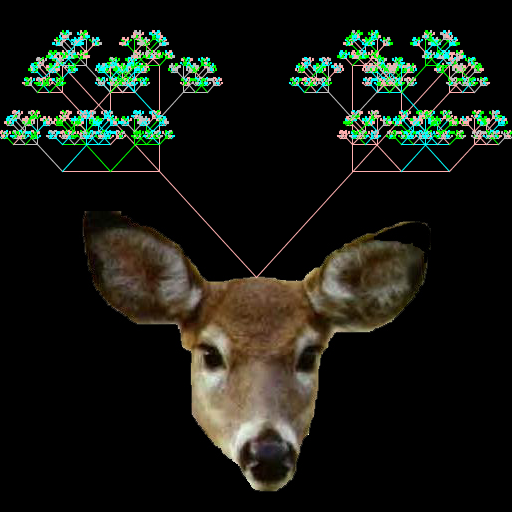 |
|
| Ryan Irwin Pythagorean tree with angle = 30 degrees... Squares of different colors on 7 color rotation... |
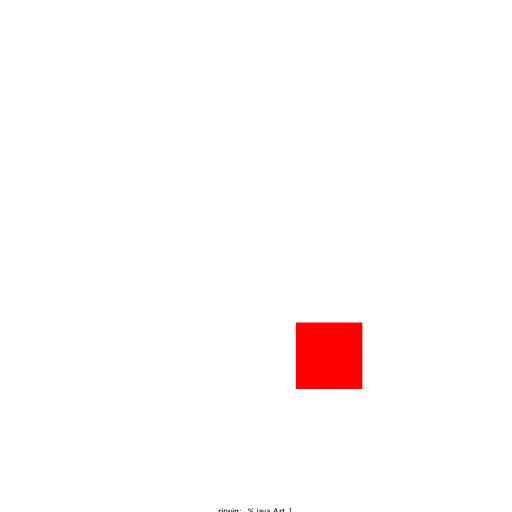 |
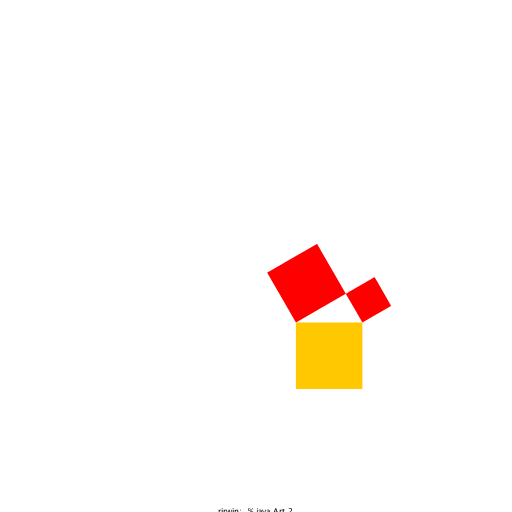 |
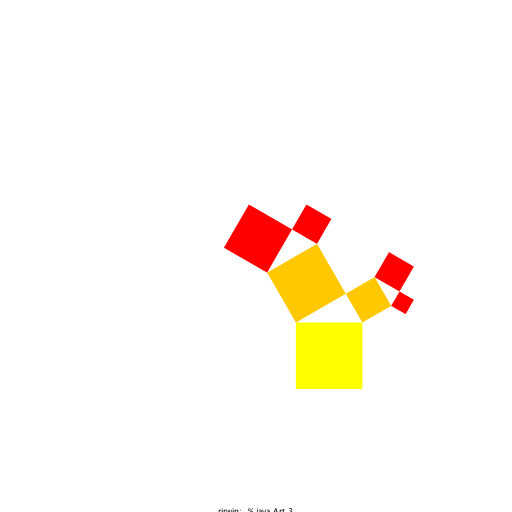 |
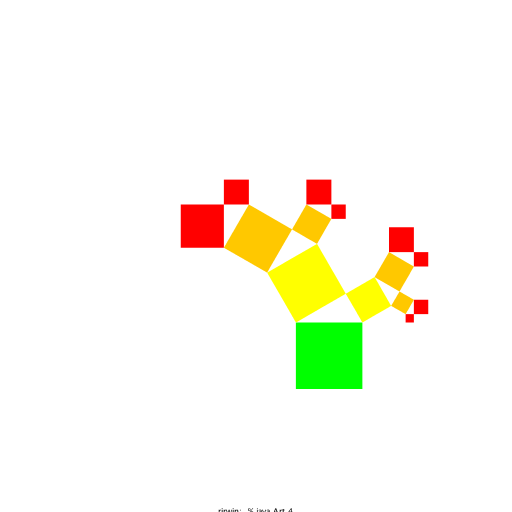 |
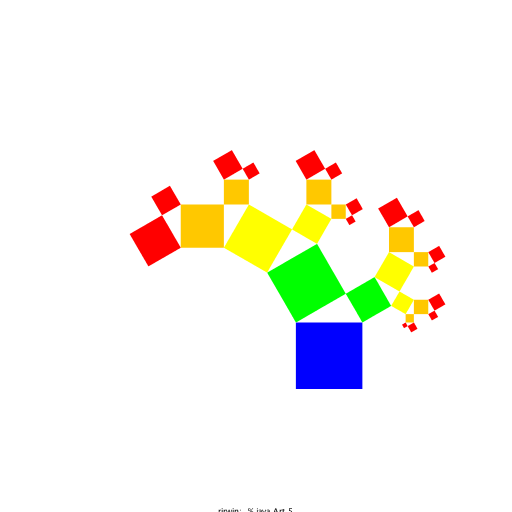 |
| John Colosimo A tree that has many branching limbs. The final two branches are green to simulate leaves. The program basically defines a direction for each line from one of 12 equally spaced directions around the unit circle. Then it draws a line in the given direction, defines two other lines, each slightly shorter than the previous, and draws them each. Once it is down to the final 2 steps of recursion it changes colors to make the tips of the lines green. |
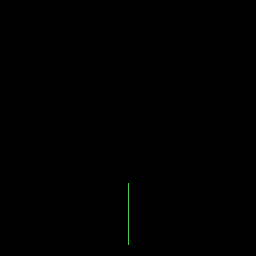 |
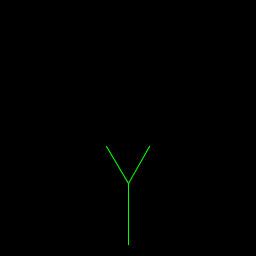 |
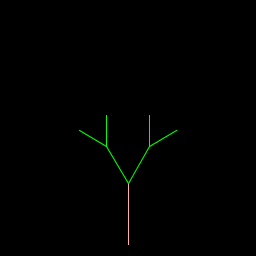 |
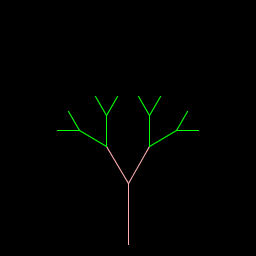 |
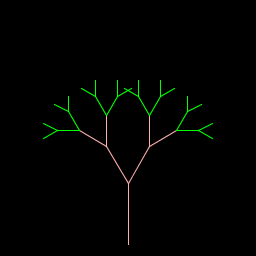 |
| Jonathan Lange My artistic creation is a pattern of hexagons. Within each hexagon, the program draws 7 other smaller hexagons. It creates a design that reminds me of a stained glass window or rocks in a patio. Because each hexagon was a smaller version of some bigger hexagon, I could express each coordinate as a weighted average of two other coordinates (with weights between 1 and 6 for x coordinates and between 1 and 12 for y coordinates). |
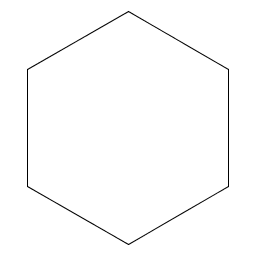 |
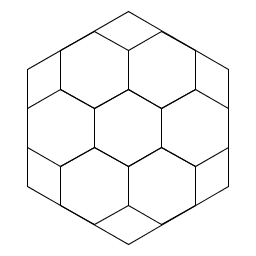 |
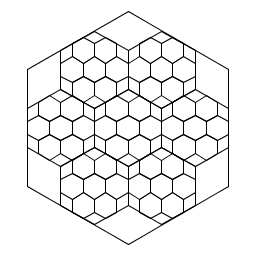 |
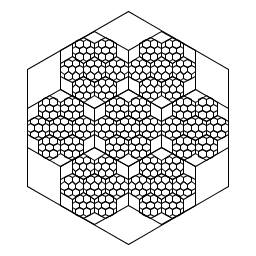 |
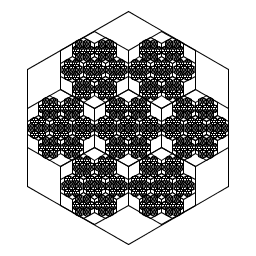 |
| Michael Gelbart The basic shape is a six-pointed star. A smaller star is drawn at each tip of the star, except for the "inward facing tip". It only draws the last (smallest) two recursive depths so that the snowflake pattern is clear. The snowflake becomes visible at a depth of N = 4 but becomes even clearer as N increases. |
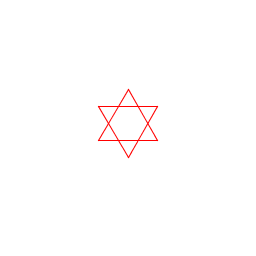 |
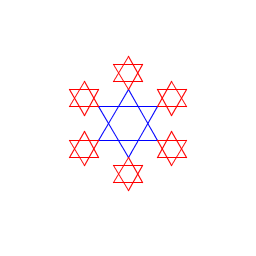 |
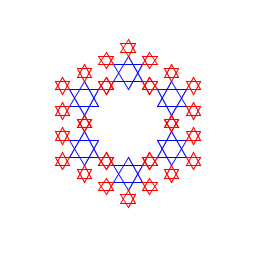 |
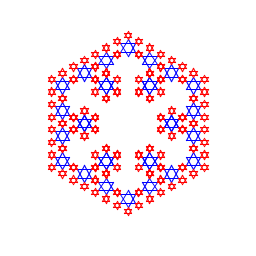 |
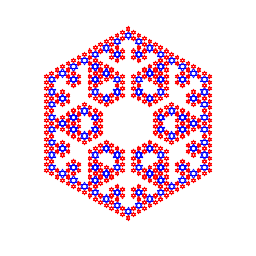 |
| Michael Medeiros This is the Minkowski sausage. The base is a horizontal or vertical line segment, and the motif follows the pattern right, down, right, up, right, down, right. The idea for this base-motif fractal was found in http://library.thinkquest.org/26242/full/index.html. The pictures do not show well. Click 1, 2, 3, 4, 5 for a better view. |
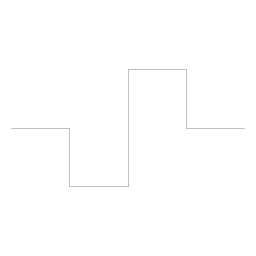 |
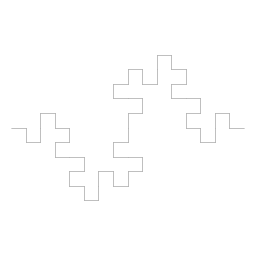 |
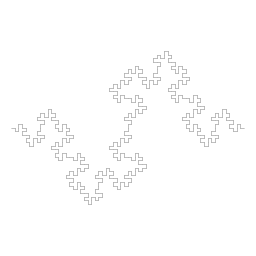 |
 |
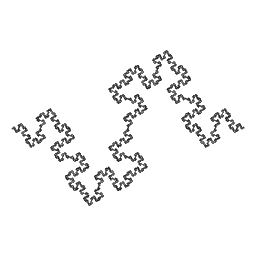 |
| Steven Liss The trees are beautiful this time of year and remind me of New England. Branches grow at random angles and taper to thin twigs near the top, while random RGB values create the mix of red, orange, yellow, and green that covers the trees. |
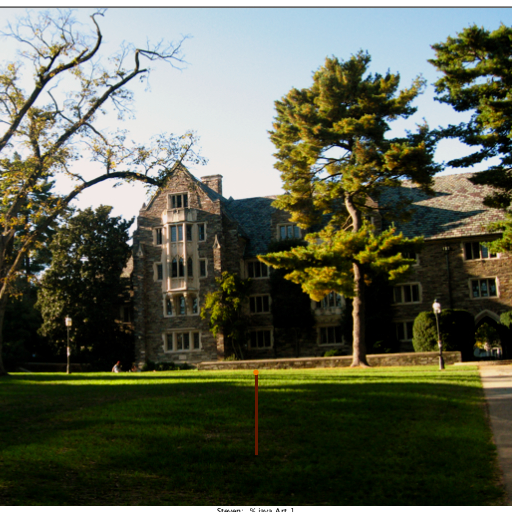 |
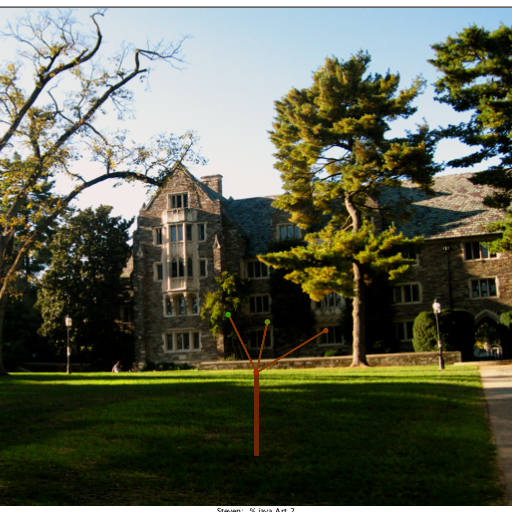 |
 |
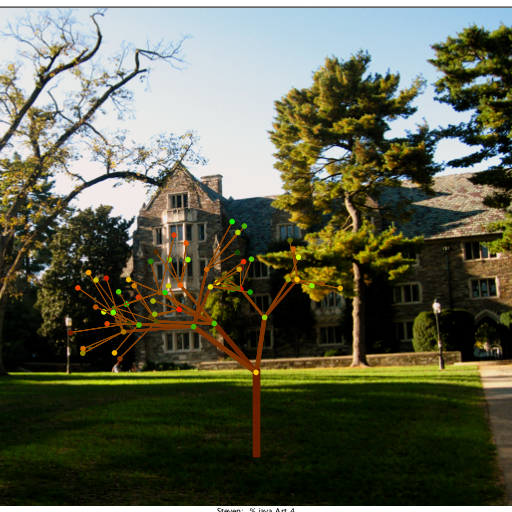 |
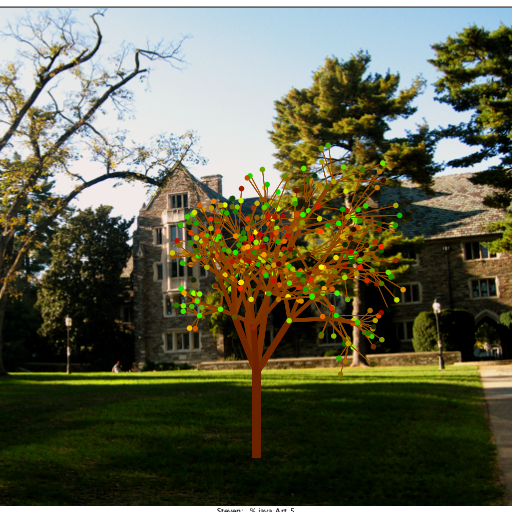 |
| Kenton Murray It draws a star, and from the four lower points draws other stars. For colors, a very patriotic image of red, white, and blue stars. |
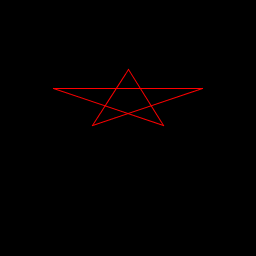 |
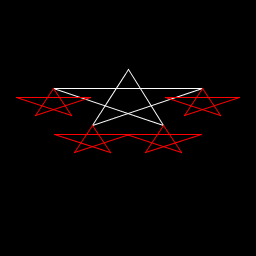 |
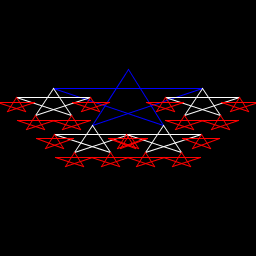 |
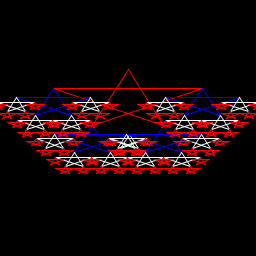 |
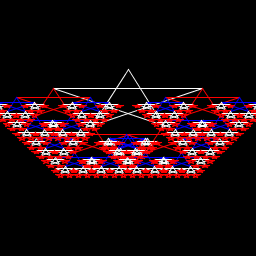 |